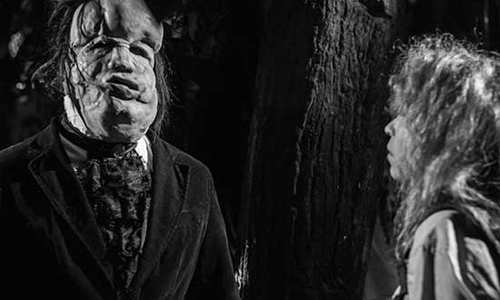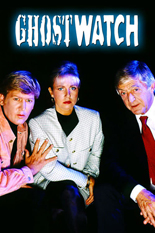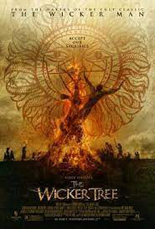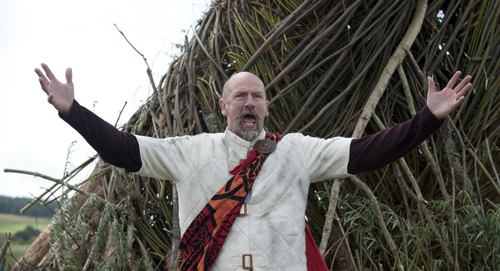
 On Halloween night, the elderly gravedigger Mr. Fettes — “Call me Vampus,” he says — shares his miserable existence with viewers of Vampus Horror Tales, not to mention four stories of stone-cold death.
On Halloween night, the elderly gravedigger Mr. Fettes — “Call me Vampus,” he says — shares his miserable existence with viewers of Vampus Horror Tales, not to mention four stories of stone-cold death.
Obviously inspired by the dawn of Spanish horror comics, the anthology film is shot lovingly in black and white. As the playful but murderous Vampus, Saturnino García (The Day of the Beast) introduces each tale. He seems to be filled with them, because after all, “Death is a business that never falls flat.”
Unfortunately, the first story sure does. “The Wedding” depicts a clandestine meeting between bride and groomsman in an escape room basement. What follows is a 20-minute conversation ending with a sputtered-engine twist not worth the wait. Afterward, a filter-free Vampus dismisses it as “submissive drivel,” and I agree.
The middle pair gives the collection its chewy center. “Birthday” follows two girls at a theme park, where a killer lurks the tracks of the stalled dark-ride attraction. The ladies-in-peril theme continues with “Second Date,” as a woman discovers her man-friend has an ulterior motive for bringing her to a quiet, remote cabin. Complicating her escape: She’s blind.
Finally, “Lineage” wonders what to do when someone you love falls victim to a vampire apocalypse. The answer fails to interest; worse, the premise does the same. I would have preferred to see the wax-museum interstitial at the onset be expanded into a full tale, as its brief life packs more of a punch. (Speaking of that setting, Vampus creator Victor Matellano revives the Paul Naschy “cameo” trick from his 2014 film, Wax, so keep your ears peeled.)
The host bits are more developed than your average horror omnibus, with rapid cuts that approximate the experience of comics’ panel-by-panel reading. More beholden to that medium than las películas, Vampus Horror Tales leans toward slicing and/or stabbing necks as a means of slaughter, presumably because it’s cheap for an indie production to pull off. (And on that note, I swear the crawl of closing credits is soundtracked by the “Rain Storm” setting on my phone’s White Noise app.). —Rod Lott


 Last summer, as part of a spinal procedure requiring me to remain semi-conscious, ketamine was administered as an anesthetic. A first-timer to the drug, I was ill-prepared for the trip of its drip: one in which my body was pushed through shapes and colors that do not exist. Members of the
Last summer, as part of a spinal procedure requiring me to remain semi-conscious, ketamine was administered as an anesthetic. A first-timer to the drug, I was ill-prepared for the trip of its drip: one in which my body was pushed through shapes and colors that do not exist. Members of the 






